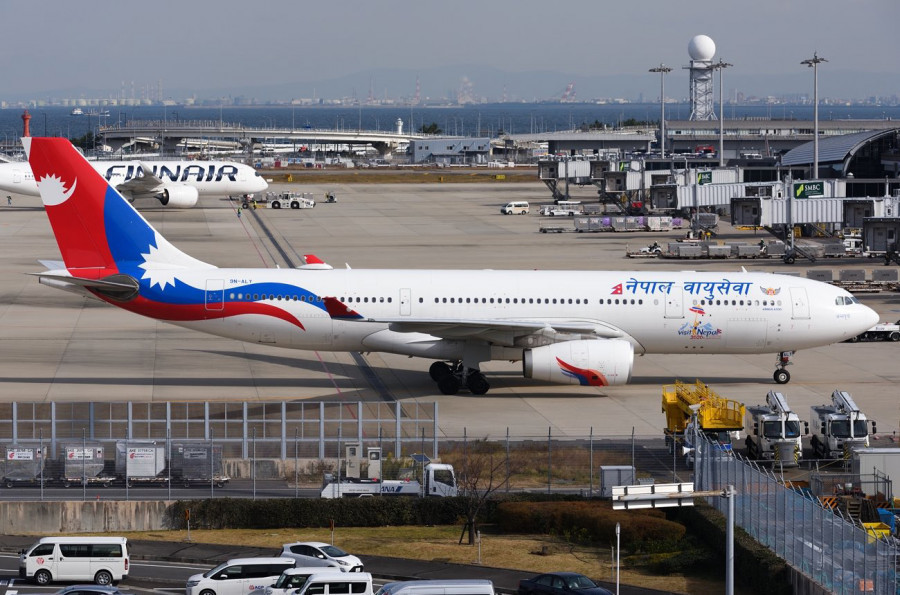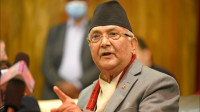National
More turbulence for Nepal’s aviation sector as its audit unlikely even in 2022
Crucial bills to split the Civil Aviation Authority of Nepal, a key to the reform of the sector, are in limbo. The audit was originally scheduled for 2019 but was continuously deferred.
Sangam Prasain
The decennial International Civil Aviation Organisation’s full safety audit of Nepal’s aviation sector was supposed to have been conducted in 2019 but the government had asked it to defer it by a year.
The reason for the request was to give the government time to complete the institutional reform of the sector: splitting of the Civil Aviation Authority of Nepal into two different entities—one of the regulator and the other of the service provider.
As per international norms, the same authority cannot be the service provider as well as the regulator, like the Civil Aviation Authority of Nepal is fulfilling at the present by providing airport services and also overseeing compliance of aviation regulations.
Such dual functions lead to a conflict of interest, the European Commission, for example, has maintained.
The International Civil Aviation Organisation, the United Nations global aviation watchdog, had agreed to the request for the year-long deferment and had planned to conduct a full safety audit of Nepal from May 10-20 last year under its universal safety oversight audit programme.
“We then decided to postpone the planned audit to March 2021 as we were in the process of organisational reform,” said Rajan Pokhrel, director general of the Civil Aviation Authority of Nepal. “The Covid-19 further deferred the audit plan.”
According to an official aware of the development, the ICAO team was then expected to arrive for an audit on March 21, 2021, but due to the Covid-19 pandemic situation and border closures, the plan was stalled once again.
“The UN agency will soon publish an audit schedule or bulletin for six nations in South Asia, including Nepal. They will then send official letters to the respective countries,” the official said.
But now the audit programme looks unlikely even in 2022, raising serious questions about Nepal’s ability to make its aviation sector norms match internationally recognised standards.
With the long-awaited plan to split the Civil Aviation Authority of Nepal continuing to be delayed and uncertainty over when the split will be possible given the deepening political instability, the authority has now urged the Civil Aviation Ministry to bring an ordinance to pass the two long-awaited aviation bills.
The Civil Aviation Authority of Nepal Bill and the Air Service Authority of Nepal Bill were stranded after President Bidya Devi Bhandari prorogued the seventh session of the National Assembly at the recommendation of the KP Sharma Oli government on January 10.
Nepali carriers are banned from Europe over safety issues, and a prerequisite to getting Nepal back in Europe’s good books is the splitting the Civil Aviation Authority of Nepal into two entities to facilitate stringent enforcement of safety regulations.
With the lower house of Parliament dissolved and mid-term elections announced, political uncertainty looms in the country, which means the proposed laws could be shelved further until either the House is reinstated or a new one is elected. Meanwhile, Nepali carriers could be left waiting forever to fly to Europe, insiders say.
Without the splitting, the authority does not want the audit.
The International Civil Aviation Organisation's universal safety oversight audit programme was launched in January 1999, in response to widespread concerns about the adequacy of aviation safety oversight around the world.
The audit focuses on eight key areas: primary aviation legislation; civil aviation organisational structure; personnel licencing activities; aircraft operations; airworthiness of civil aircraft; aerodrome (meaning airfields or airports); air navigation services; and accident and serious incident investigations.
The last full audit of Nepal’s aviation sector was conducted in 2009 in which the aviation watchdog gave Nepal a score of 46 percent in effective implementation of critical elements of the safety oversight system, way below the global average of 60 percent.
In July 2013, a mission visited Nepal to validate the corrective measures the UN body had recommended to address the deficiencies pointed out in 2009. It detected several lapses during an on-site audit and gave a “significant safety concern” tag to Nepal’s aviation sector in its audit report submitted in August 2013.
In particular, of the eight critical elements it raised a “red flag” over “aircraft operations”. There had been a sharp rise in the number of air accidents and incidents with at least two aircraft crashing every year between 2009 and 2012.
Based on significant safety concerns, the European Commission blacklisted all Nepali carriers in December 2013.
The 2013 audit report pointed out that Nepal’s score for effective implementation of critical elements of the safety oversight system, recommended in the 2009 full audit, was 54.97 percent, still far below the global average.
An official at the civil aviation body said that despite the postponement of the audit, they have been under a constant screening of the UN global aviation watchdog through the International Civil Aviation Organisation’s Universal Security Audit Programme – Continuous Monitoring Approach.
The continuous monitoring approach promotes global aviation security through continuous auditing and monitoring of member states’ aviation security performance to enhance their aviation security compliance and oversight capabilities.
In July 2017, the Montréal-based agency-coordinated validation mission gave Nepal a score of 66 percent for effective implementation of safety standards—and that was above the global standard of 60 percent. It also withdrew the significant safety concern tag given to Nepal’s aviation sector in the same year.
Following a ban by the European Union on all Nepal-based airlines in 2013, Nepal had introduced stringent measures to improve safety standards in all commercial and private airlines.
“Based on our internal assessment, the effective implementation of safety standards currently is 66.7 percent,” said Pokhrel. “We have targeted 70 percent through the ICAO audit.”
The global average is 64 percent.
Despite the gradual improvement of air safety measures, Nepal’s score for effective implementation of accident investigation is a lowly 18.68 percent, far below the global average of 56.15 percent.
“This is because the Civil Aviation Ministry has an aircraft accident and incident investigation section which is not an independent body,” said an official at the civil aviation regulator on condition of anonymity. “An investigation commission is set up on an ad hoc basis whenever there is an accident or an incident but these investigators have no training to conduct investigations. The toothless commissions hide the deficiencies.”
Various aviation watch dogs have been long suggesting the formation of a permanent investigation body or a bureau.
Most of the time, the ministry has been delegating responsibility to investigate aircraft incidents and accidents to the Civil Aviation Authority of Nepal, the regulating body.
Meanwhile, if Nepal keeps on postponing the audit, questions will be raised about the state’s ability to address the shortcomings of the aviation sector, according to Pokhrel.
But without the necessary laws in place, the Civil Aviation Authority of Nepal cannot be split into two different entities and that is unlikely even by 2022.
“Even if the ICAO conducts the audit in 2022, it will have to do it again when the Civil Aviation Authority of Nepal is split as we don’t see this possible by then,” Pokhrel said. “Therefore there is some confusion about the audit.”




 5.4°C Kathmandu
5.4°C Kathmandu









%20(1).jpg&w=300&height=200)



